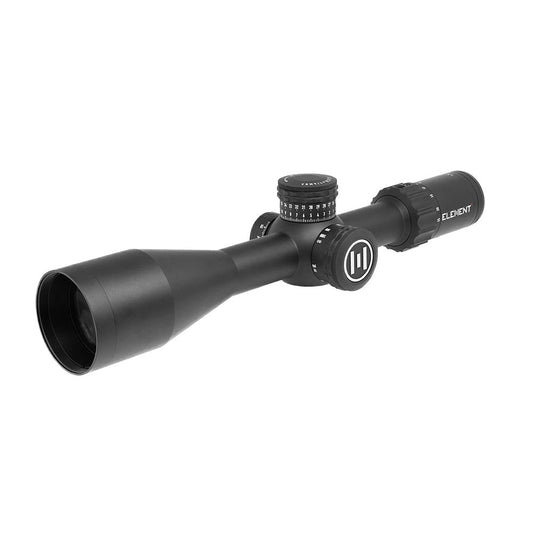

Element Optics Nexus Gen II 4-25x50 APR-2D MRAD Scope 50006 features a first focal plane (FFP) reticle, allowing for accurate range estimations and holdovers regardless of magnification. With a magnification range from 4x to 25x, this scope is versatile enough for tactical applications and recreational shooting. The advanced optical systems provide clear, bright images in various lighting conditions, ensuring reliable performance in the field.
Built for durability, the rugged construction withstands harsh elements while maintaining consistent accuracy. The MRAD adjustments offer precise control, catering to shooters who prioritize precision. Weighing only 30.7 oz, it’s designed for easy transport, making it an excellent choice for extended outings or competitions.
Features:
- FIRST FOCAL PLANE RETICLE for accurate holdovers at any magnification.
- VERSATILE MAGNIFICATION ranging from 4x to 25x, ideal for various shooting scenarios.
- EXCEPTIONAL CLARITY with advanced optical systems for bright, sharp images.
- DURABLE CONSTRUCTION ensures long-lasting performance, ready for any conditions.
- PRECISION MRAD ADJUSTMENTS allow for repeatable and accurate dialing.
- ILLUMINATED RETICLE improves visibility in low-light conditions for tracking targets.
- WIDE FIELD OF VIEW for better situational awareness and target acquisition.
- LIGHTWEIGHT DESIGN at only 30.7 oz, making it easy to carry during long sessions.
Technical Specifications
| Specification | Details |
|---|---|
| SKU | 50006-EOptics |
| Magnification Range | 4x - 25x |
| Exit Pupil | 7.1-2.0mm |
| Eye Relief | 3.6” |
| Field of View | 29.2-4.7 ft @ 100 yds |
| Length | 350mm (13.8”) |
| Objective Diameter | 50mm |
| Weight | 30.7 oz |
What’s in the Box?
- Element Optics Nexus Gen II 4-25x50 APR-2D MRAD Scope
- Lens covers
- Padded carrying case
- Neck strap
Customer Reviews
“This scope is a game changer for my long-range shooting. The clarity is remarkable!”
“I love the FFP reticle; it makes shooting at varying distances so much easier.”
FAQ
Comparing the Nexus Gen II with other scopes? Its FFP reticle allows for accurate shooting at any magnification, providing an edge over standard scopes. The rugged design ensures durability, making it suitable for both tactical and leisure use.
For maintenance, keep the lenses clean with a microfiber cloth and occasionally check for adjustments. When considering alternatives, review the features carefully to ensure you select the right magnification and reticle for your shooting preferences.
Similar Models
Looking for the perfect binoculars? Discover our extensive Element Optics lineup, including models like the Element Optics Helix for exceptional close-range hunting and the Element Optics Titan for long-range precision. Explore our full collection for optics tailored to your adventures.
You May Also Like
Here’s some of our most similar products people are buying. Click to discover trending style.








